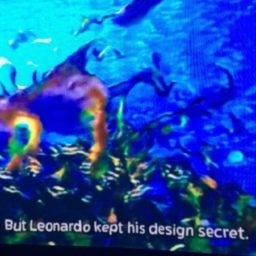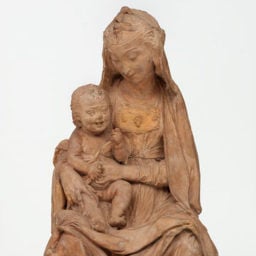What’s an arms dealer to do after the art world chases it out of its museum sponsorships? One Italian weapons manufacturer had a clever solution: rebrand the company after a famous artist.
In 2017, Finmeccanica, a defense contractor that has supplied war planes to Saudi Arabia and laser targets to Turkey’s fighters in Syria, changed its name to Leonardo, in honor of Renaissance polymath Leonardo da Vinci, “innovator in his times and recognized as a universal symbol of genius and creativity,” the company said in a press release at the time.
The re-naming came after a series of public-relations debacles for the arms dealer, both in the art world and beyond. In 2012, activists in London staged a series of demonstrations at the city’s National Gallery of Art protesting Finmeccanica’s sponsorship of the museum, which had allowed it to use the gallery spaces for private receptions and to host delegates during an annual weapons trade conference.
Activists wrote a letter arguing that “the gallery not only provides a gloss of legitimacy for a reprehensible trade”—a practice that’s come to be known as “artwashing”—”it is also providing very practical support for the arms industry. How can an institution which celebrates the creative spirit of humanity open its door to those dealing in products designed to kill and destroy?” A few months later, the defense contractor ended its sponsorship of the museum, a full year earlier than planned.
This public relations dilemma preceded a graver corporate disaster in 2014, when Finmeccanica’s former CEO was convicted of corruption for bribing Indian officials to win a bid for 12 luxury helicopters. (The CEO was later acquitted, but India withdrew the deal—worth $662 million—and Finmeccanica’s bottom-line has never recovered.)
Then, this past summer, a group of artists pulled their work out of a popular group show at London’s Design Museum titled “Hope to Nope: Graphics and Politics 2008–18,” about the history of protest art in social justice movements, beginning with Shepard Fairey’s “Hope” poster for Obama’s 2008 presidential campaign. In an astonishingly bungled bit of scheduling, the museum hosted a cocktail party for the arms dealer in its atrium on the same night it held a panel discussion about protest art—just one room away.

A “Nope to Arms” demonstration at the Design Museum in London in 2018. Photo by Kristian Buus.
Fairey, who asked the museum to remove his work from the show in protest, told the New York Times: “I’ve had to make hard choices in my past, but it’s always been important for me to put my belief system first and my financial needs second.” A third of the other artists in the show followed suit and eventually banded together to organize a guerrilla protest exhibition. At the time, the Design Museum said that it would review its “due diligence policy related to commercial and fundraising activities.”
There has been mounting pressure on art institutions to sever ties with controversial donors in recent years. Demonstrators held up signs and burned sage at the Whitney Museum in December to protest funding from Warren B. Kanders, who owns Safariland, the company that manufactures the tear gas recently deployed on the US-Mexico border, and who is vice chair of the Whitney’s board. In October, Shell ended its 12-year sponsorship of London’s National Gallery, which had been the repeated target of actions by activist groups over the years. And throughout much of last year, artist Nan Goldin led protests at art institutions up and down the East Coast that had received money from the Sackler family, which owns the producer of the painkiller Oxycontin.
But no corporation that we know of has “artwashed” itself quite as literally as Finmeccanica, which said of its transformation into Leonardo that “a new name is needed as the first and most important way to reflect the deep values that are at the basis of our daily commitment, a symbol to represent the strength and quality of the change currently underway.”
Of course, Leonardo da Vinci was something of an arms engineer himself, having designed crossbows, tanks, shrapnel, siege engines, and canons in his day. But Leonardo da Vinci’s efforts were primarily conceptual—historians have argued that he even imbued his weapons with design flaws to ensure they’d never be realized—while the other Leonardo’s are not.
“Men fight wars and destroy everything around them,” Leonardo da Vinci wrote in one of his notebooks. “The earth should open and swallow them up. He who does not value life does not deserve it. Never destroy another life through rage, or through malice.”










